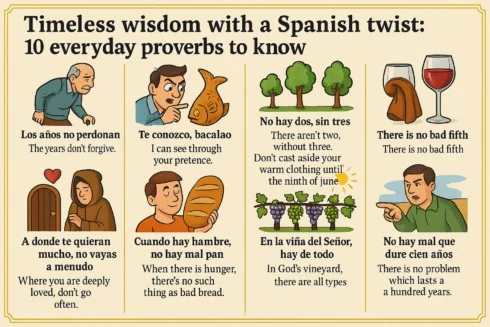DILIP Kuner delves into the pageantry of Spain’s Semana Santa Easter processions.

READ MORE: What is ‘la torrija’? The delicious treat that’s traditionally eaten during Semana Santa in Spain
Every year during Holy Week, streets throughout Spain turn into a swaying sea of robed and cone-hooded penitents marching to the solemn beat of brass instruments and drums.
The scent of candle wax and incense hangs in the air, mingling with the heady fragrance of spring orange blossom.
Those who have experienced the passion and pageantry of Semana Santa know that this is one of Spain’s most soul-stirring celebrations.
Religious associations known as cofradías or ‘brotherhoods’ are at the heart of the traditional ceremonies.
Many brotherhoods date back to the Middle Ages.
Semana Santa processions are also known as ‘penance processions’ in which members of the brotherhoods, nazarenos, parade from their church to the city’s cathedral carrying floats, known as tronos.
Precious religious icons are brought out of churches and paraded on immense golden thrones in lavish processions that bring millions of locals and tourists together in the run-up to Easter.
From Holy Thursday to Easter Sunday, city centre thoroughfares come to a standstill to make way for these mega fiestas.
Many of the biggest parades – on which no money is spared – have been declared events of tourist interest to offset expenses.
Sevilla

Those who live in the city centre will have grown accustomed to the colourful cacophony that persists into the early hours of the morning during Holy Week.It is estimated around 500,000 people take part in Sevilla’s parades.
As the sun sets, floats (tronos) decked with flickering candles surrounding ornate statues of the Virgin Mary and Jesus Christ light up the streets.
The most famous of Sevilla’s multiple processions is La Madrugada (dawn), during which, you’re likely to see women dressed in black lace mantillas and flamenco dresses expressing their emotion through this iconic Andalucian genre of music, dance and song.
Malaga

Wherever he’s filming, Hollywood actor Antonio Banderas never misses the cue for his home town’s Semana Santa processions. The Malagueño has often played a co-starring role helping the brotherhoods to carry the floats of the Virgin of Malaga and the María Santísima de Lágrimas y Favores and has been moved to tears himself during the procession.
Semana Santa has been celebrated in the city for more than 500 years and was declared a Fiesta of International Tourist Interest in 1980.
Although its origin is religious, it has evolved into a social celebration of Spain’s culture and the start of Spring, and the scent of newly-minted orange blossom fills the air.
Alicante

Easter celebrations in Alicante have a maritime flavour starting with the figure of Christ of the Sea coming into harbour aboard a boat, accompanied by port police.
Another unusual event is the Last Supper, where a monumental float requiring nearly 200 bearers is paraded through the streets.
READ MORE: Six typical Easter dishes to savour during Semana Santa in Spain
Valencia

On Easter Saturday Valencianos like to make a noise. They celebrate Christ’s Resurrection with fireworks at midnight but they are not noisy enough for the locals. They join in the noise by throwing pots and old crockery from upper floor balconies. Take an umbrella if you are visiting – water is regularly dumped on unwary visitors too.
Lorca (Murcia)

Declared a Festival of International Tourist Interest in 2007, this procession is more reminiscent of a flamboyant carnival. The city’s different religious brotherhoods spend months preparing floats for what has become something of a competition. Marc Anthony, Nero and Cleopatra are among some of the pre-Christian characters that feature in this Easter procession.
Why the pointy hoods?

Worn by the nazarenos – members of the religious associations, known as cofradías (brotherhoods), they are ‘penitents’ who cover their faces in mourning and shame both for the sins of their forefathers during the Spanish Inquisition and those they have committed throughout the past year.
Their conical hats (capirotes), traditionally worn by clowns and criminals, are a physical manifestation of this shame.
Many foreigners are unnerved by the costumes’ similarity to the Ku Klux Klan in America but there can be no comparison with the Semana Santa penitentes who are ordinary men and women proudly upholding a fiercely religious tradition.
Click here to read more News from The Olive Press.








